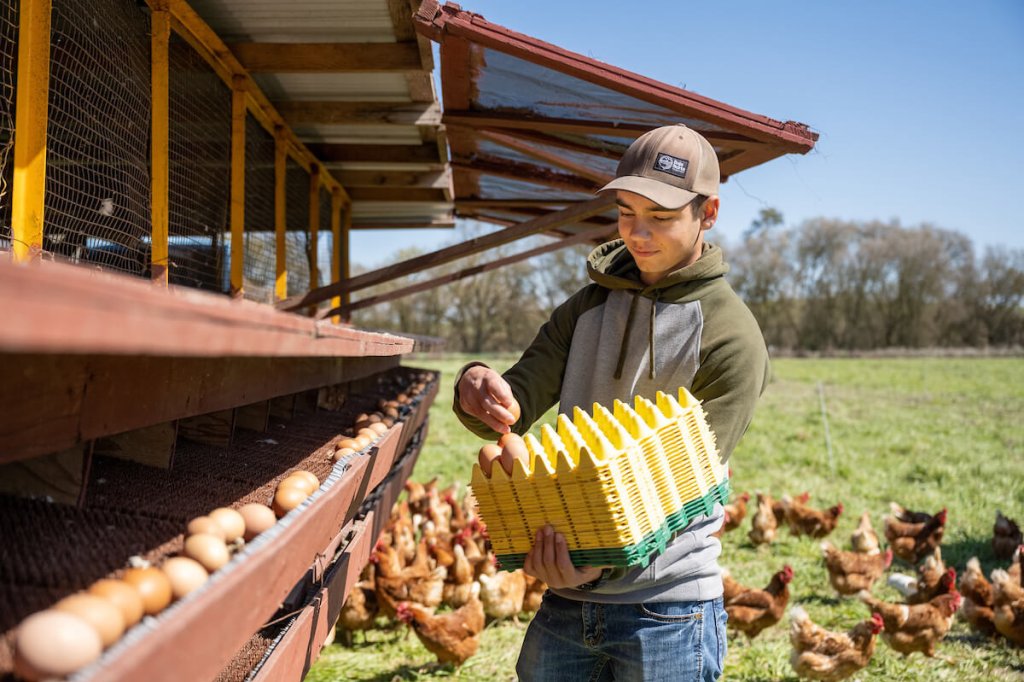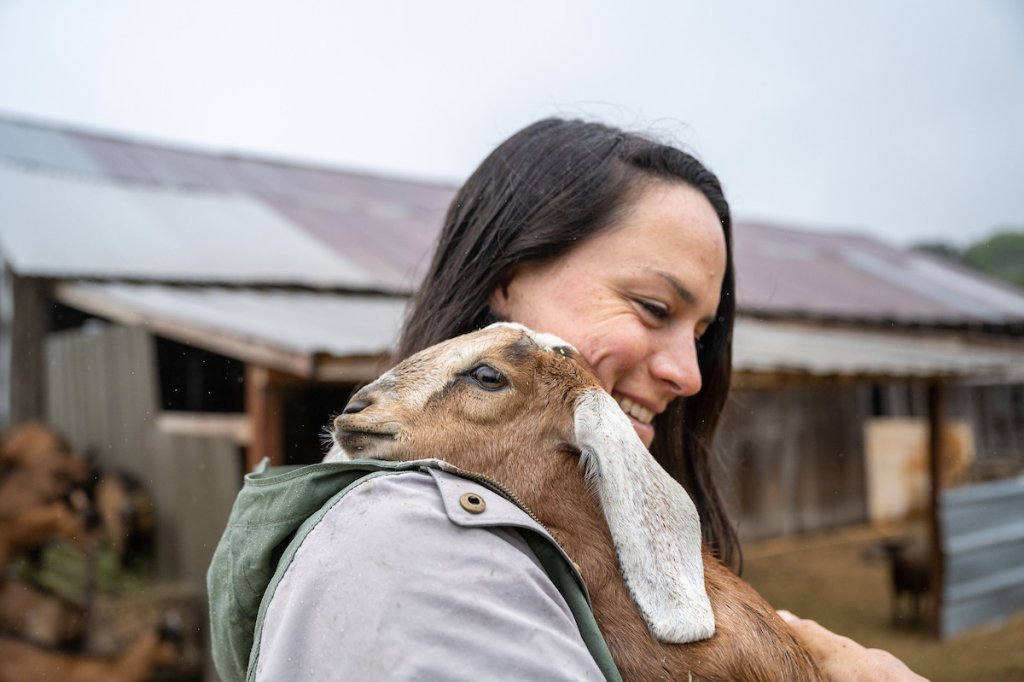American Farmland Trust Releases Smart Solar℠ Guiding Principles to Save the Land that Sustains Us
Growing Renewable Energy While Strengthening Farm Viability and Safeguarding Healthy Soil
Washington, D.C. – American Farmland Trust released Smart Solar℠ principles for solar development that will ensure we maintain our ability to produce food, fuel and fiber to sustain our nation for generations to come. Projects that conform to AFT’s Smart Solar principles meet three important goals — to accelerate solar energy development, strengthen farm viability and safeguard land well-suited for farming and ranching.
“AFT’s principles aim to accelerate the generation of solar energy but offer a blueprint for solar development that maximizes climate mitigation while minimizing impact on productive farmland and strengthening opportunities for farmers,” said John Piotti, AFT president and CEO. “If done well, Smart Solar projects can provide income for farmers and landowners and protect land well-suited for agriculture. America needs both—much more solar energy AND productive, resilient farms and ranches.”
Smart Solar Principles
AFT has developed Smart Solar principles to help shape solar development across America. These principles can be applied broadly recognizing that Smart Solar will look different across the country due to differences in landscapes, agricultural production systems and other characteristics.
Principle 1: Prioritize Solar Siting on Buildings and Land Not Well Suited for Farming (Unless Agrivoltaics)
Emphasize solar energy development on rooftops, carports, irrigation ditches, brownfields or other land not well suited for agriculture to help minimize the impacts of solar energy on our nation’s best agricultural land and farm businesses.
Principle 2: Safeguard Soil and the Ability for Land to Be Used for Agriculture
If solar energy is developed on farmland or ranchland, policies and practices should protect soil health, especially during construction and decommissioning, to ensure opportunities for farming in the future.
Principle 3: Grow Agrivoltaics for Agricultural Production & Solar Energy
Agriculture and solar energy can coexist if appropriate planning is undertaken. Agrivoltaic projects sustain agricultural production underneath solar panels and/or between rows of solar panels throughout the life of the project.
Principle 4: Promote Equity and Farm Viability
Farmers and underserved communities should benefit from solar energy development. There must be inclusive stakeholder engagement to ensure projects strengthen farm viability and reflect farmer interests, including underserved producers that face barriers to accessing land and other resources.
Without appropriate planning, solar development also threatens to convert millions of acres of farm and ranchland out of agricultural production. Significantly more renewable energy, including solar, is needed to reduce U.S. greenhouse gas emissions and combat the climate crisis. The Department of Energy’s September 2021 Solar Futures Study estimates we will potentially need 10.3 million acres of land to achieve the Biden’s administration’s goal to scale up solar energy development from 4% to 45% of energy production by 2050 — with 90% of solar installation expected to be located in rural areas. According to Princeton’s Zero Lab, the Inflation Reduction Act, could more than quintuple the amount of solar installed annually by 2025. The growth of solar development will reshape rural landscapes and farm economies. It has the potential to cause conflicts between the use of agricultural land to grow food and its use to produce renewable energy, while generating public backlash against renewable energy deployment overall.
Farmers and ranchers need this transition to combat climate change and minimize future impacts from droughts, floods, extreme heat and beyond. Smart Solar guides solar development to where it has the least negative impact on land well suited for farming, ensures that agricultural land where projects are sited can be farmed in the future and promotes “agrivoltaics” (or “dual use”) solar projects that sustain agricultural production underneath and/or between rows of solar panels throughout the life of the project.
Solar energy development can create opportunities for farmers and landowners by generating new sources of income. But it also threatens farmer-renters who could be displaced and will have lasting impacts on local economies dependent on agricultural production. Farmland is already under threat from residential and commercial development, poorly planned housing development, strip malls and parking lots, which consume 2000 acres of agricultural lands daily. American Farmland Trust’s most recent study Farms Under Threat 2040: Choosing an Abundant Future shows if we continue this business-as-usual development 18 million acres will no longer be producing food, fuel and fiber by 2040. In the runaway sprawl scenario outlined in the report, 1 million acres per year may be paved over or fragmented, or otherwise converted to uses that jeopardize agriculture, taking 24 million acres out of production by 2040.
Using farmland to generate energy must be done with care. Farmland is needed for food security but also to sequester carbon, filter air and water and for wildlife habitat. As we work to decarbonize our energy grid, AFT believes we must also save the land that sustains us by adhering to Smart Solar principles. “Projects that align with AFT’s Smart Solar principles can also accelerate renewable energy development by enhancing community support for solar projects.”
In sharing these principles with policy makers, land trusts, agricultural organizations, farmers, the solar industry, conservationists and citizens, AFT seeks to stay true to its mission to protect farmland, implement environmentally sound farming practices and keep farmers on the land, while heeding the call to reduce greenhouse gas emissions and increase renewable energy production to mitigate climate change.
###
American Farmland Trust is the only national organization that takes a holistic approach to agriculture, focusing on the land itself, the agricultural practices used on that land, and the farmers and ranchers who do the work. AFT launched the conservation agriculture movement and continues to raise public awareness through our No Farms, No Food message. Since our founding in 1980, AFT has helped permanently protect over 6.8 million acres of agricultural lands, advanced environmentally-sound farming practices on millions of additional acres and supported thousands of farm families.



